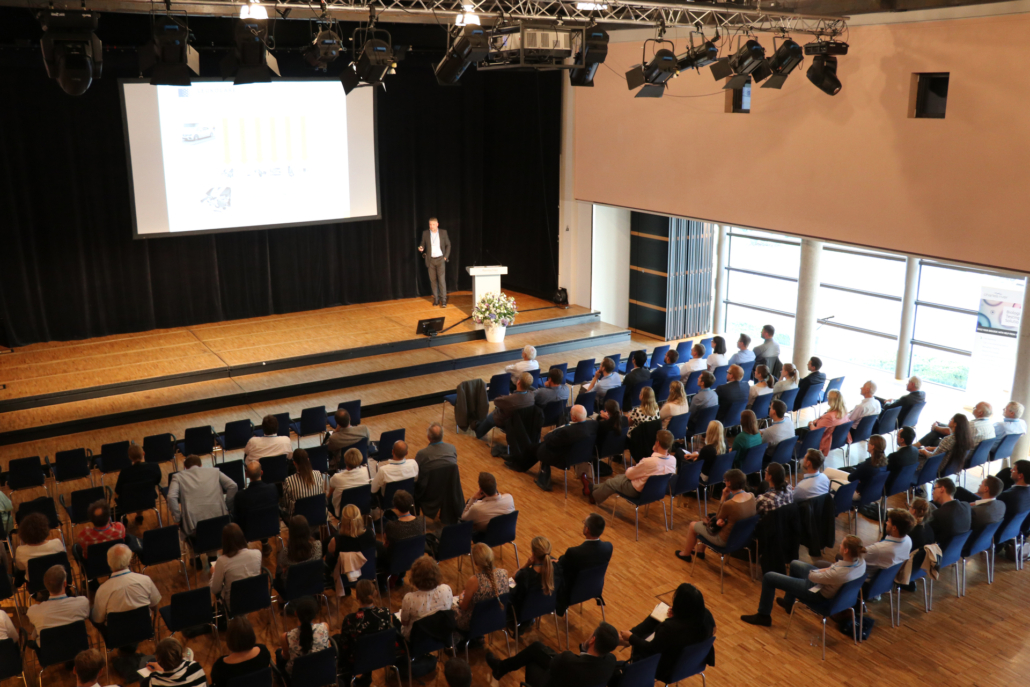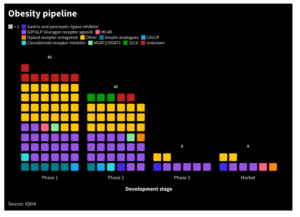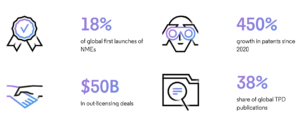
Experts discuss process intensification
Roughly 150 life science professionals met at the 5th Biotech Days to discuss the latest progress in bioprocess intensification.
Topics at the meeting organised by Rentschler Biopharma SE in Laupheim, Germany, covered cell line and process development/optimisation, protein aggregation, viral vaccines, integration of continuous UPS and DSP, new product purification methods and process analytical technology (PAT) for timely bioprocess monitoring. A pre-conference Young Scientist Cell Culture Biotechnology Retreat provided young group members of established biomanufacturing labs with the opportunity to present latest results right from their bench.
In a keynote lecture, Michael Scholl, CEO of Leukocare, Rentschler Biopharma‘s exclusive formulation partner, pointed out that protein formulation, which is still under the radar of most developer, can add significant benefit to a drug product’s features. Using Leukocare’s SPS® protein stabilisation platform for formulation right from the beginning of development enables storage of recombinant proteins at room temperature, prevents protein degradation and aggregation as well as the need for lyophilisation.
While huge numbers of bioprocesses worth more than US$50bn annually have been established since Genentech’s tissue plasminogen activator (TPA) Activase became the first recombinant therapeutic produced in CHO cells in 1987, challenges remain. Florian Wurm, who was among the team that developed succeeding generation processes at Genentech, explained that the concept of clonality of cell lines, which is still highlighted in industry (PDA J Pharm Sci Technol, doi: 10.5731/pdajpst.2018.008789), can’t be applied to CHO cells because even the original immortalised hamster cell lines of 1957 were just aneuploid, quasi-diploid cell populations that are highly genetically variable. Consequently, such clonally derived heterogeneous CHO cell populations stochastically adapt if any selection pressure occurs during a process. That’s good and bad news for developers: While i.e. biosimilar makers have to deal with a high error rate in the reproduction of traits, the most widely used cell line for the production of biologics also is highly adaptable to different culture conditions and processes.
A way to improve phenotypic control of such clonally derived CHO cell populations was presented by Nicole Borth from the BOKU and ACIB in Vienna. In addition to genomic variation, monitoring of the expression levels of genes, that determine growth and productivity, is crucial to get early information on changes in the cell population within a bioreactor, she explained. Since integration of four genes, identified in a whole-genome siRNA screen, into other cell lines delivered mixed results concerning growth and productivity, her group developed sophisticated models predicting which genes to epigenetically engineer (through DNA methylation and or lncRNA) in order to fine-tune the relevant expression levels and phenotypic outcome.
About 25 % of biologics are difficult to produce in CHO cells, partly due to their complex glycosylation pattern. Véronique Chotteau’s group from the Royal Institute of Technology in Stockholm together with MedImmune seeked ways to improve the productivity of CHO cells and especially of HEK293 cells, a cell line with human glycosylation pattern. A comparison of a high cell density perfusion process set up with CHO and HEK293 cells to produce 30 difficult-to-express proteins revealed that 70 % thereof were significantly better expressed in the HEK293 cells. The high cell density perfusion process for HEK293 cells using Alternating Tangential Flow Filtration (ATF) was optimised using the model protein erythropoietin (EPO) to address issues such as shear force sensitity (foam!) of the HEK cells. On average it yielded 2g protein per day, the amount delivered by a fed-batch process in two weeks.
Speakers also addressed the issue of protein aggregation, which can significantly decrease yields of a process, particularly in processes with high product yields, but also trigger anaphylactic reactions in patients. As regulatory authorities restrict protein aggregate levels in the final product, developers are forced to reduce the level of aggregates during downstream processing. However, advanced formulation technology as well as the monitoring of aggregate formation during upstream processing might be strategies around that cost-intensive solution.
Friedemann Hesse from Biberach University of Applied Sciences presented a rational approach that allows the prevention of protein aggregation during upstream processing of antibody-producing CHO cells. Currently, there is no technique to monitor the whole range of sizes of soluble and insoluble protein aggregates during upstream processing. Using size-exclusion chromatography (SEC), 2D spectroscopy to read out the fluorescence (Bis-ANS-) dye-based assay as well as fluorescence microscopy, Hesse’s group initially found 67 % protein oligomers, 10 % dimers, and 23 % monomers after 144 h of cultivation in a fed-batch culture of CHO-DG44 cells. Real-time monitoring of product and aggregate formation allowed modeling and validation of critical process parameters (salt, pH, sugars, amino acids, polyols etc.) that quantitatively correlated with the reduction of aggregates under a range of different culture conditions.
As the market for vaccines has been growing from $6.9bn in 2001 to S56bn in 2015, alternative production systems to the half billion chicken eggs are crucial to satisfy the growing demand. Intensified cell-based perfusion processes for the production of influenza and flavivirus (i.e. Yellow fever) vaccines as well as for MVA-based gene therapy vectors were presented by Udo Reichl from the MPI for Dynamics of Complex Technical Systems in Magdeburg. Using a capacity sensor to adjust perfusion rates in a 1-L bioreactor equipped with ATF-controlled perfusion, EB66 cells achieved cell concentrations 75 times higher than the usual standard within 10 days, equivalent to 10 million yellow fever vaccine doses (1010 PFU/ml). Adjustment of the perfusion rate strictly based on the measured cell concentration and the glucose consumption rate of cells thus seem to enable optimal growth.
While upstream processing has led to increasing yields, downstream processing has remained a costly bottleneck: advances in titers over the past two-decade shift the main manufacturing costs from USP towards DSP. Alois Jungbauer from the BOKU and ACIB in Vienna discussed the cost advantages and the integration of continuous downstream processing with perfusion culture for antibody manufacturing. Combination of a generic antibody production process with a purification process developed in Jungbauer’s lab, which replaces two of the three chromatographic purification steps by a continuous precipitation step, resulted in cost reductions at all stages of the life cycle of a therapeutic antibody. Anja Trapp from Rentschler Biopharma presented a complementary precipitation strategy using caprylic acid to remove process-related impurities such as mAb aggregates or host cell protein. Another emerging area of process intensification is optical read-out of process parameters. Jürgen Hubbuch gave an overview about the performance of current spectroscopic sensors and its application in process analytical technology. Stefan R. Schmidt. COO of BioAtrium AG, Visp, Switzerland, gave an overview about process intensification strategies in the context of disposables and provided case studies for optimisation in upstream and downstream processing.
The meeting showed that there is a lot space for improvement in the highly regulated field of bioprocessing. Progress can, however, only follow regulatory acceptance for innovative approaches.
Rentschler Biopharma SE, a specialist for mammalian expression, is committed to add innovative validated technologies to its offerings as a CDMO and to support the discussion with leaders in the sector about new trends and developments in antibody production and beyond.


 IQVIA
IQVIA White House
White House Clarivate
Clarivate